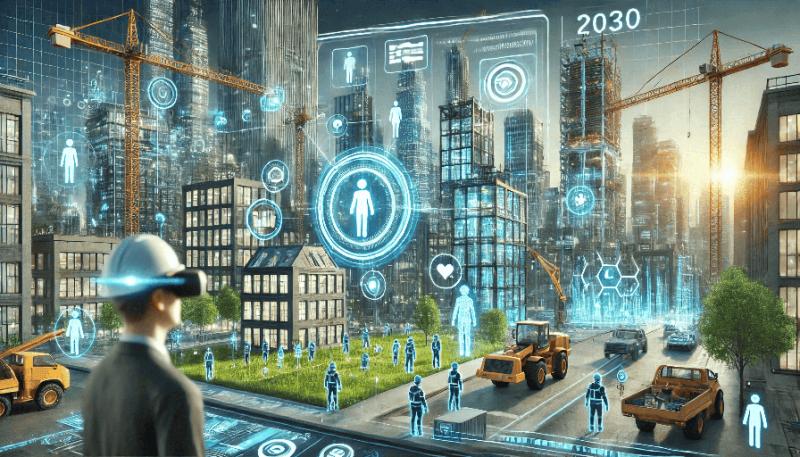The Future of BIM Technology in Construction: Predictions for 2030

Twenty years of revolution, and the construction industry has been evolved along with the adoption of Building Information Modelling. Efficiency, sustainability, and innovation: BIM construction in 2030 is expected to change even more. In this blog, key predictions regarding the future of BIM technology are discussed, and from there, what it means for the AEC industry.
1. More Extensive Use of Artificial Intelligence and Automation
By 2030, BIM will not be utilized in isolation but will most probably be combined with artificial intelligence. Smart project planning and execution allow AI-powered tools to analyze voluminous data for optimized designs, construction challenges, and efficient workflows. Clash detection, quantity take-offs, and construction sequencing will thus be highly automated with minimal manual intervention. This, in return, allows the professional to invest more time in effective problem-solving.
2. Increased Digital Twin Applications
Digital twin technology is going to be an integral part of BIM services, and their adoption shall be very exponential in the near future. The digital twin refers to a virtual model of the physical asset for real-time monitoring and predictive maintenance. In 2030, embedding digital twins into the core will be a standard practice for smart city projects and major infrastructure development, thus guaranteeing seamless integration between virtual and physical worlds.
3. Effortless Collaboration with Cloud-Based BIM Platforms
The future of BIM technology is collaborative. In cloud-based platforms, stakeholders in projects would increasingly be able to collaborate, independently of location, in real time. This assures smoother workflows with minimal slack in projects. Special tools, such as common data environments, will continue to evolve and improve communication between architects, engineers, and contractors.
4. Sustainable Construction Through BIM
As the world calls for greener construction, BIM services will become fundamentally decisive in realizing sustainability goals. By 2030, BIM will integrate advanced lifecycle analysis tools that consider the environmental impacts of materials and designs. AEC firms will be dependent on BIM to minimize waste, reduce carbon emissions, and ensure that buildings are energy-efficient.
5. Increased Adoption of Scan to BIM Technology
Of course, the most promising variance is the Scan to BIM services, which digitize 3D laser scanning of physical areas into thorough BIM models. This technology will be the norm for renovation and retrofitting projects by 2030. It will also become indispensable in historic preservation and complex industrial upgrades where accuracy and precision mean a great deal.
6. Immersive AR and VR Experiences
The construction industry will adopt the use of Augmented Reality and Virtual Reality to enhance the visualization of projects. Project stakeholders will, through BIM models, be able to take virtual walks through project areas to discern potential problems before actual building. It therefore ensures less expensive reworks and improvements in customer satisfaction.
7. Integration with IoT for Smarter Construction
By 2030, the IoT will integrate with BIM in turning buildings into smart, interconnected structures. IoT sensors embedded in structures will provide real data to BIM models for predictive maintenance, energy optimization, and enhanced safety measures.
8. Global BIM Standardization
As BIM becomes more widespread, so will the demand for standards. Until 2030, international norms of BIM will ensure that processes are uniform and that AEC firms can work on projects anywhere in the world. Governments and other governments and other regulatory authorities will also require the use of BIM in the infrastructural development of public utilities and enhance the application in all locations.
Conclusion
The future of BIM in construction looks impressive, with advances that are going to be incredibly changing. From AI and automation to sustainability and the integration of the Internet of Things, BIM will continue to make a mark in innovation and efficiency. Be it about BIM services or the use of Scan to BIM services, being ahead of the trends would be pretty important in competitive markets.
Unlock limitless possibilities in the future of BIM for your construction projects with the guidance of industry experts who truly understand its transformative potential.
Comments